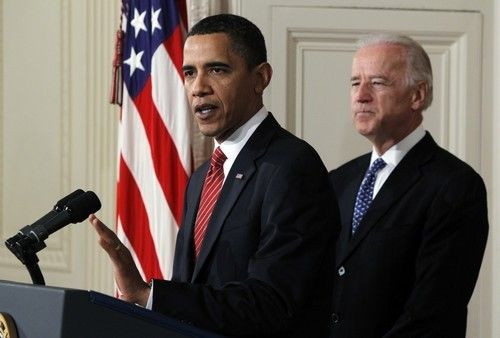Hope for 2011: stocks outperform in third year of presidential term

Investors who are worried about the health of the stock market might take some solace from the evidence that the U.S. equities have performed exceptionally well during the third year of a presidential term (Barack Obama enters the third year of his administration in January 2011).
According to data from S&P, since 1945, the S&P 500 index has climbed by an average of 17 percent in the third year of a presidential term in office.
By contrast, the index has risen (on average) only 5.7 percent during years 1, 2 and 4 of a president’s term.
In recent years, the S&P 500 index gained a modest 5.5 percent in 2007 (the third-year of George W. Bush's second term), but soared 28.7 percent in the third-year of his first term in 2003.
During 1999, the third year of Bill Clinton's second term, the market rose a healthy 21.0 percent, and surged an impressive 37.6 percent in 1995 (the third year of his first term).
Even in 1991, amidst a deep recession, the stock market climbed a handsome 30.5 percent (the third year of George Bush's term in the Oval Office).
Moreover, according to the Stock Trader’s Almanac, the equity market has not suffered a “down year” in the third year of a president’s term since 1939 and the only time the market endured a significant loss during such a year happened in 1931, during the depths of The Great Depression.
Sam Stovall, chief investment strategist at S&P, suggests that one explanation behind this third-year strong performance phenomenon might have to do with “stimulus anticipation.”
“The presidential party in power wants to stay in power,” he said. “As a result, the president typically introduces legislation that will stimulate the economy and bear fruit by the time voters go back to the polls in November of year four. Investors anticipate the benefit of this stimulus to economic growth, corporate earnings, and consumer confidence, by buying into stocks in year three.”
However, this time, we might have entered a vastly different market environment given that the Federal Government has already injected hundreds of billions of dollars of stimulus through the auspices of TARP. QE1 and QE2.
“Therefore, this time the president may be out of ‘silver bullets,’ and left with nothing to offer,” Stovall said.
Still, 2011 could see still more stimulus money poured into the economy (thereby increasingly the likelihood of a strongly positive year for the stock market). In fact, Federal Reserve chairman Ben Bernanke just indicated that a new round of quantitative easing (QE3) is not unthinkable.
Meanwhile, Democrats and Republicans are currently hammering out a deal that could extend both the Bush tax cuts for all income levels, as well as extend unemployment insurance (both of which could be seen as “stimuli.”)
Nonetheless, S&P forecasts that the S&P 500 index will gain about 9.5 percent (in total return) over the next 12 months, although volatility will probably be higher.
“We believe the U.S. equity market has finished digesting the 19% advance from the July 2 low through the November 5 recovery high and will head higher in the coming year,” S&P said in a statement.
© Copyright IBTimes 2024. All rights reserved.





















